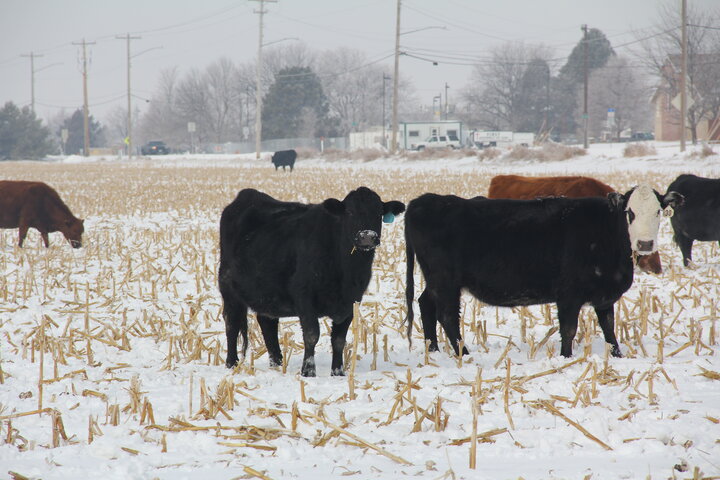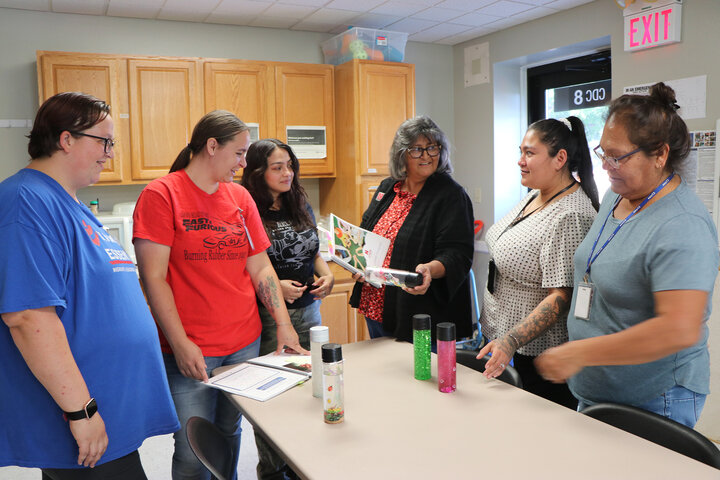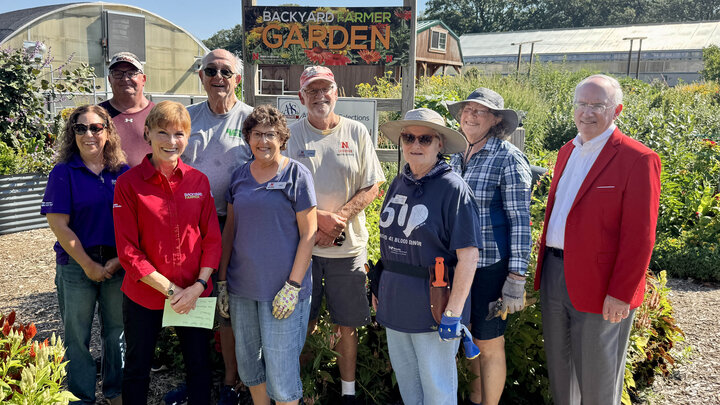Local Interest

Keys for Corn Stalk Grazing
By Aaron Berger, Nebraska Extension Educator
Nebraska has 10.5 million corn acres and 1.5 million beef cows - more than enough acres of corn residue for grazing beef cows through the winter.
Scouting fields before grazing is important to determine the amount of corn present and to look for spilled corn that could cause grain overload, which could result in cattle bloat or death. If there are more than 8-10 bushels of corn on the ground per acre as ears of corn, a grazing strategy to control corn intake will need to be used to minimize grain overload risk. When there is a minimum of ears of corn on the ground, the number of cattle to be grazed and the length of time for grazing should be determined based on corn bushel yield per acre and the average weight of cattle. The UNL Corn Stalk Grazing Calculator is an Excel® spreadsheet that can be used to calculate this. A quick way to estimate grazing days per acre available for a 1200-pound non-lactating cow is to take the corn bushel yield and divide by 3.5. For example, 180-bushel yield / 3.5 = 51 grazing days per acre.
Cattle tend to select for downed corn first and then seek out husk and leaves. The quality of grazing starts high at approximately 70 percent total digestible nutrients (TDN) and then decreases to a low of 45 percent TDN at the end of the grazing period. The rate of quality decline is dependent on stocking rate and environmental factors such as moisture and field conditions. Mature non-lactating, spring calving cows in a body condition score 5 or better will not need protein supplement, but will need salt, mineral, and vitamins when grazed at Nebraska Extension recommended stocking rates.
First-calf heifers within 90 days of calving will need protein and energy supplementation to meet nutrient requirements. Feeding 3.5 lbs. per head per day of dried distillers grains will meet this need. Fall-calving cows will also need additional protein and energy to meet nutrient requirements. Feeding 5 lbs. per head per day of dried distillers grains would supply this need. Grazing weaned calves with a targeted gain of one pound per day will need to be fed an energy and protein supplement. Research has demonstrated that dried distillers grains fed at 2 lbs. per head per day to calves will usually meet this targeted level of gain. Deep snow and ice can severely limit cattle's ability to graze corn residue. Have a backup plan and other feed resources available to meet cattle feed needs when this occurs. Corn residue can be an excellent, economical resource for late fall and winter grazing in many parts of the state.
nowing the keys for grazing can help producers effectively utilize it. The Nebraska Extension Circular Grazing Crop Residues with Beef Cattle provides additional information for grazing corn residue.
Our Scotts Bluff County Extension Office is seeking a front office individual.
Applications will be accepted until the end of day January 21st. The application is available on the Scotts Bluff County website.

Nebraska Extension early childhood educator passionate about building strong families
By Chabella Guzman, PREEC Communications
Many Nebraska Extension educators are called to their positions. Jackie Guzman is no exception. She is the Nebraska Extension early childhood educator and lead educator in the Nebraska Extension Engagement Zone 1, located at the University of Nebraska-Lincoln Panhandle Research Extension and Education Center in Scottsbluff.
“It is a purpose, a calling for me. This is where we need to start with parents and children to build a solid foundation, where the children are ready to learn and more apt to graduate,” she said.
Among the programs Guzman provides to professionals is the CHIME (Cultivating Healthy Intentional Mindful Educators) program. It is an eight-week program that focuses on the person working with young children, providing them with the skills to work effectively with children by first helping themselves through mindfulness.
Guzman has developed and implemented programs for non-traditional audiences while incorporating traditional 4-H curriculum and methodologies for youth. One such program is embryology, which includes Extension 4-H educators. “I provide incubators, and the farmers provide eggs. There is a curriculum with activities for elementary school children and early childhood/preschool programs,” she said.



